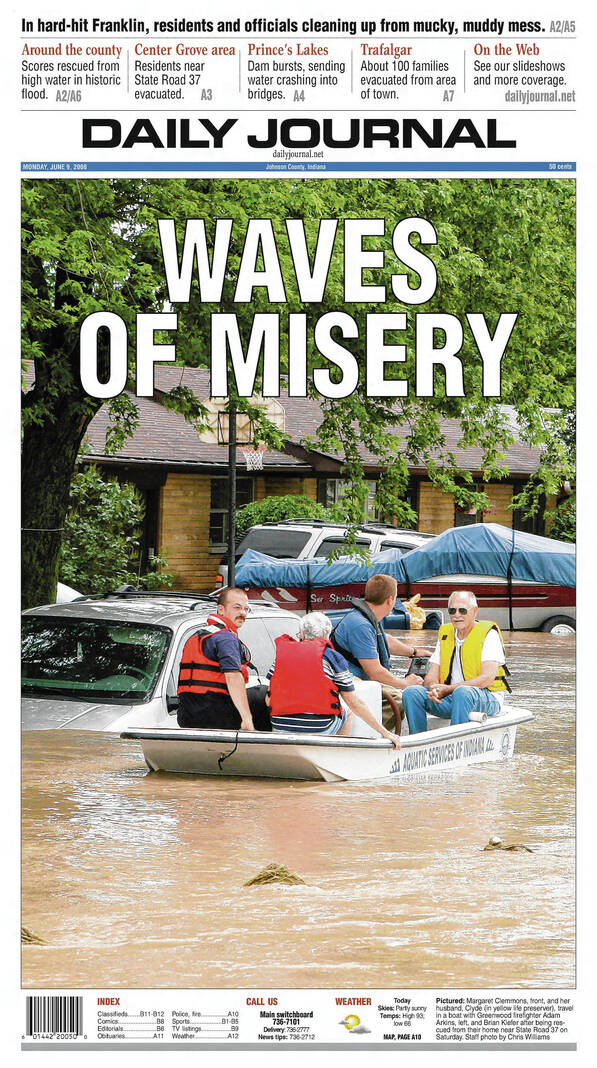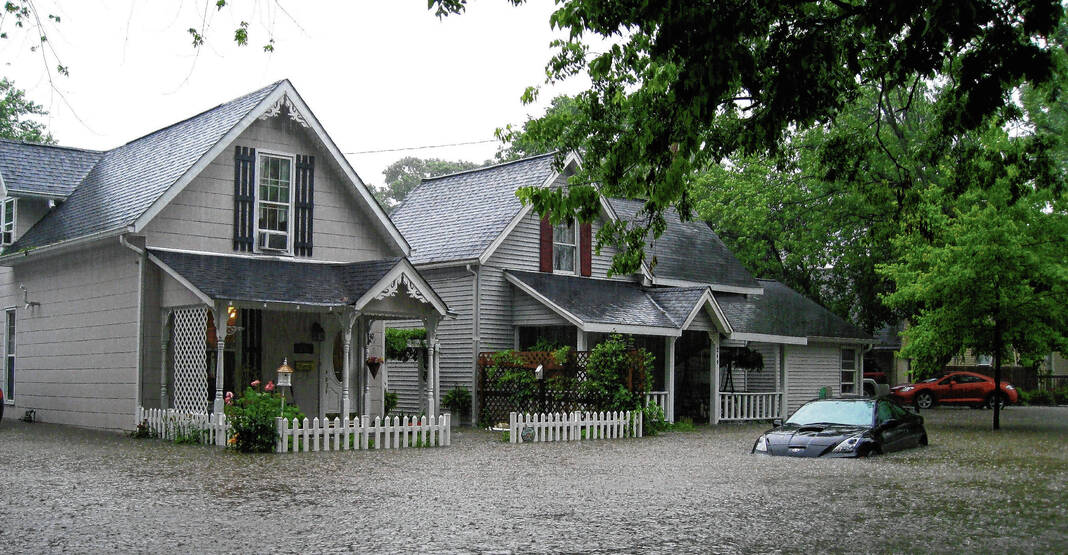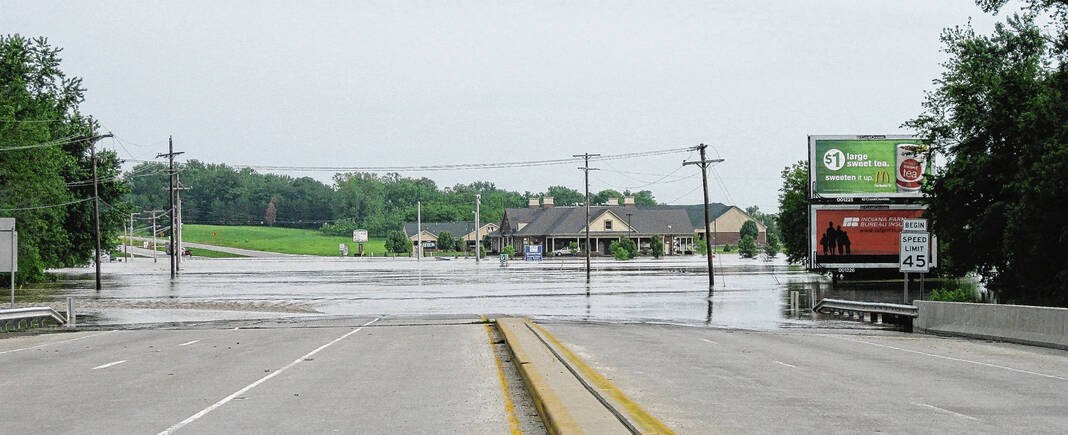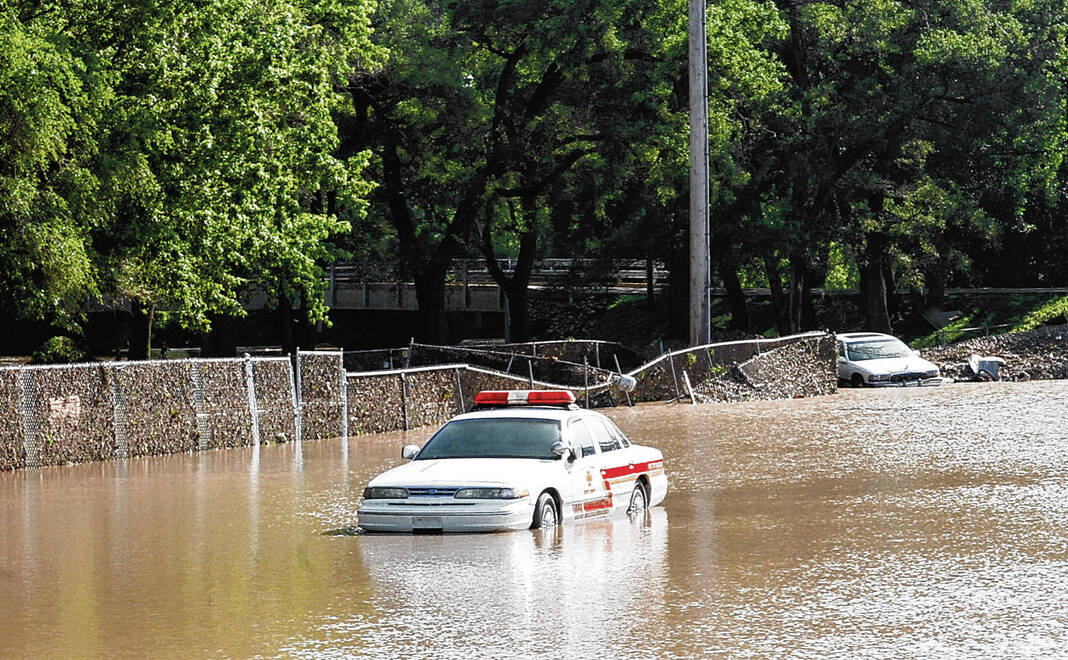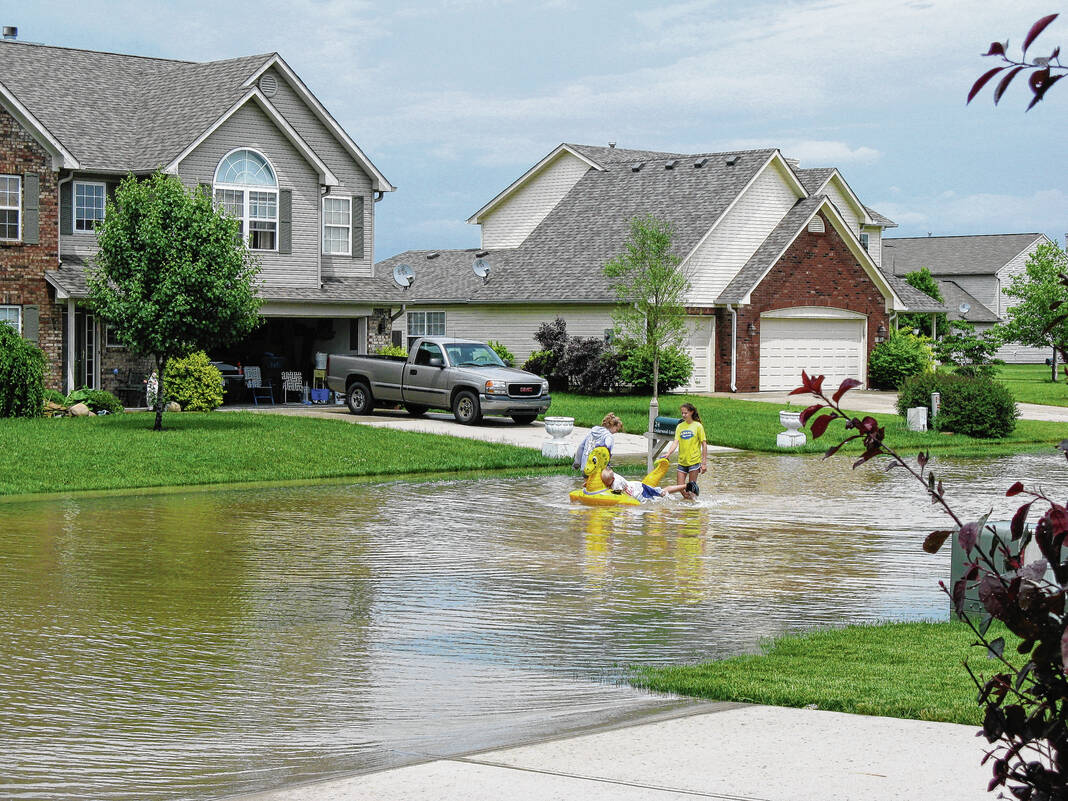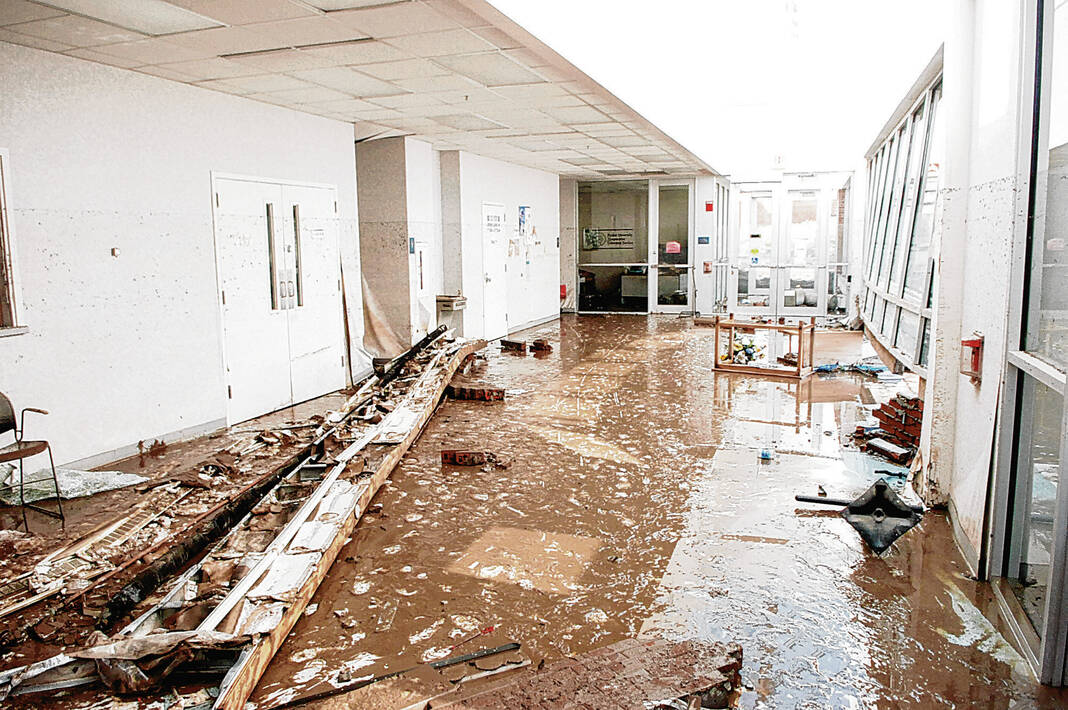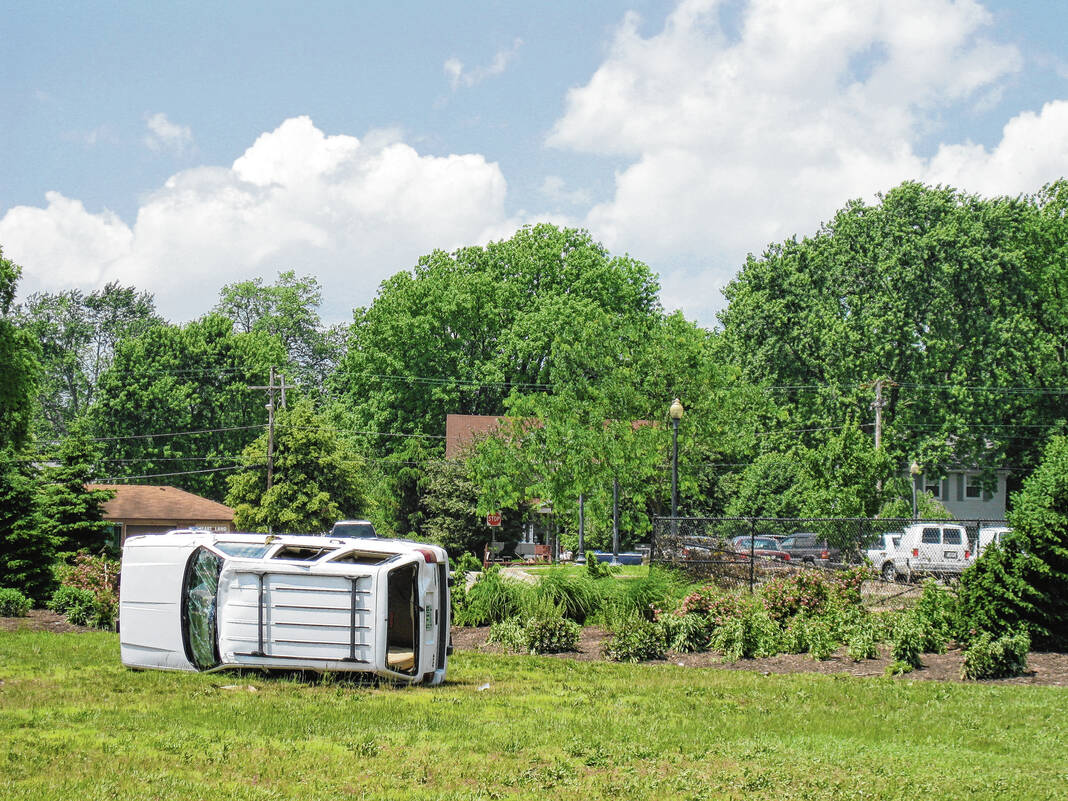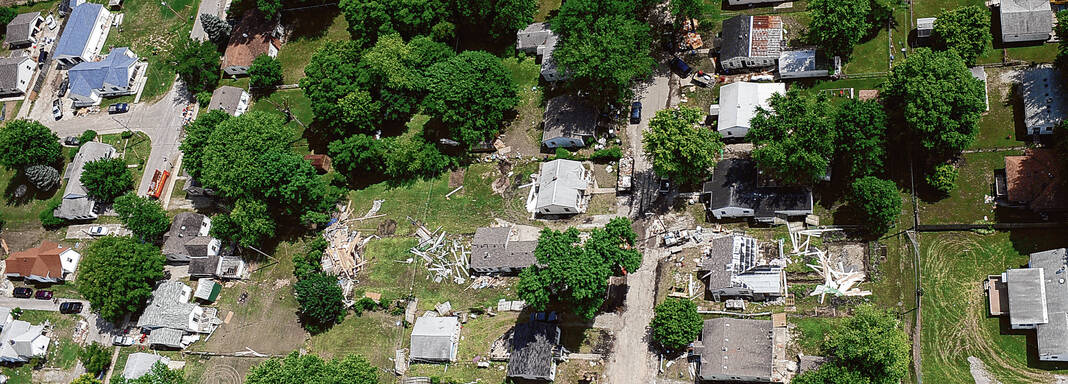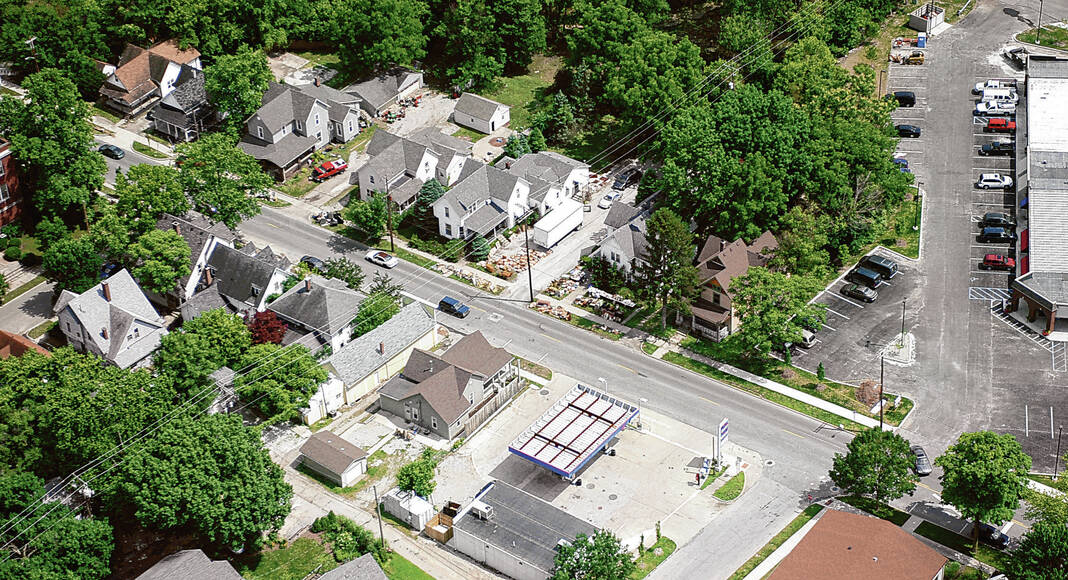Fifteen years ago, the rain wouldn’t stop and floodwaters kept rising throughout Johnson County.
Streets became rivers as homes, businesses and even government buildings became inundated with water on June 7, 2008. Roads and bridges washed away, cutting off wide parts of the county. Homes became islands, with the residents inside forced to wade through floodwaters to flee — or be evacuated by boats and other watercraft.
Described as a 100-year flood, the flood of June 2008 affected the entire county. In Edinburgh, residents were still recovering from a tornado a few days earlier when the waters rose. In Franklin, downtown became impassable, and in White River Township, floodwaters filled basements in the Bluff Acres subdivision.
Officials later determined that a 1,000-year rainfall during the first week of June 2008 swelled Youngs Creek into a raging river that caused damage throughout Franklin. From June 2 to June 8, 2008, 13.86 inches of rain was recorded in Franklin — nearly three times as much rainfall as the city did on average for June, according to reports at the time.
The heavy rains filled Youngs Creek with more than 500 times as much water as normal, and on June 7, 2008, the creek carried more water than the Wabash River normally did at any given point.
Nine days after the flood, a damage assessment showed that damage was reported in about third-thirds of Johnson County. As many as 1,200 homes were believed to have been damaged by flooding.
A four-mile stretch of Honey Creek was clogged with debris, along with some spots along Sugar Creek and Youngs Creek. At the time of the assessment on June 16, 2008, Johnson Memorial Hospital — which itself was flooded — was operating out of about 75% of its building and expected to be back to normal within two months.
The damage to county and city government buildings was estimated to total about $10 million. At least 10 county-owned vehicles were damaged in the flooding or in rescue efforts, along with another 20 vehicles from Franklin.
Damage to parks in Greenwood, Franklin and Prince’s Lakes, including trails that washed away, debris cleanup and damage to a pedestrian bridge, was estimated at $250,000.
‘Don’t Leave’
Johnson County Museum of History Genealogy Librarian Linda Talley was at a church meeting with her husband at Greenwood Village South when the floodwaters began to rise on June 7, 2008.
“It was raining and raining and raining and all of a sudden we could see water coming up,” Talley recalled.

Greenwood Village South staff began making announcements about the flooding over the PA system, telling residents they may not want to flush their toilets. This was because they were having trouble due to the amount of water coming down.
A little while later, Talley receives a call from her son, a sheriff’s deputy, asking where they were.
“He said, ‘Don’t leave.’ We asked why?, and he goes, ‘It’s flooded. … the whole county is flooded,’” she said.
Talley and her husband ended up staying at Greenwood Village a little bit longer than they anticipated, but luckily, didn’t have any flooding at their home, she said. However, Talley wasn’t able to come to work at the museum for a day because roads were closed.
There was some flooding in the kitchen area of the museum’s basement, which was caused by water coming up through the sewer pipes. The rest of the building was fine, she said.
Water rises in basement
Franklin resident Jane Hughey, education coordinator for the museum, remembers that day vividly as well. Hughey lives out on the east side of Franklin near Franklin College, and remembers her basement flooding during that day in June.

“I live in a house that I had lived in since I was a kid and it had never flooded like that,” Hughey said. “I had water coming in through the basement walls and up the drain too.”
Hughey, then an eighth-grade teacher for Franklin Schools, first learned about how bad the flood was from her mailman. He was concerned he wasn’t going to be able to complete his route because of all of the roads were flooding, she said.
At the same time, water in Hughey’s basement was rising, approaching two feet. At one point her heat came on, and puzzled, she called a repairman to find out why her furnace — which was in her basement — turned on by itself.
“He said, ‘Don’t worry, it won’t happen again. That’s your control panel going out,’” she said.
As the day went on, news about the flooding spread quickly. Hughey remembers being on both her landline and her cell phone at the same time to answer calls from concerned friends.
“I’m standing there talking to both of them, and by then it was afternoon,” Hughey said. “I knew I was in trouble, but Franklin was shut down.”
Hughey eventually went to a friend’s house for dinner and had to weave her way around the city amid all the flooding. The water in her basement eventually went down by itself, and by the next morning, it was gone.
“I was not as affected (as others),” Hughey said. “I got it cleaned up, got my furnace back working. … I did have to get a new washer and dryer, which was in the basement.”
Hughey said she was very fortunate that her damage was confined to her basement but remembers speaking to people who weren’t as lucky.
“The worst (damage) was down there by the cemetery, and I’ve talked to some people who live there,” Hughey said. “One woman … said the firemen came to her and said. ‘If you don’t leave now, we will carry you out.’ They forced her to leave, fortunately. She wasn’t going to leave her house, but it was getting so dangerous.”
The aftermath
The Sunday following the flood, Hughey went to church, where people asked if anybody had flooding. Later that afternoon, some of her congregation came to her house and helped her clean up in the aftermath.
“I had a lot of people helping,” she said.
Talley’s home ultimately did not get any floodwater, but there was another family at her church who did. The family, who lived west of Greenwood, had a lot of damage, so her congregation went over and helped them clean up, she said.
In the days that followed the flood, Hughey said it was interesting to see how everyone pulled together and were working to help those who had lost everything.
At Franklin College, officials opened up a facility where volunteer groups would get checked in before being given an assignment to help people. They helped clean up debris and fixed meals for those affected for several weeks afterwards, Hughey said.
Volunteers came from all over the country, and within the county, she said.
“They had volunteers coming for several weeks afterward,” Hughey said.


